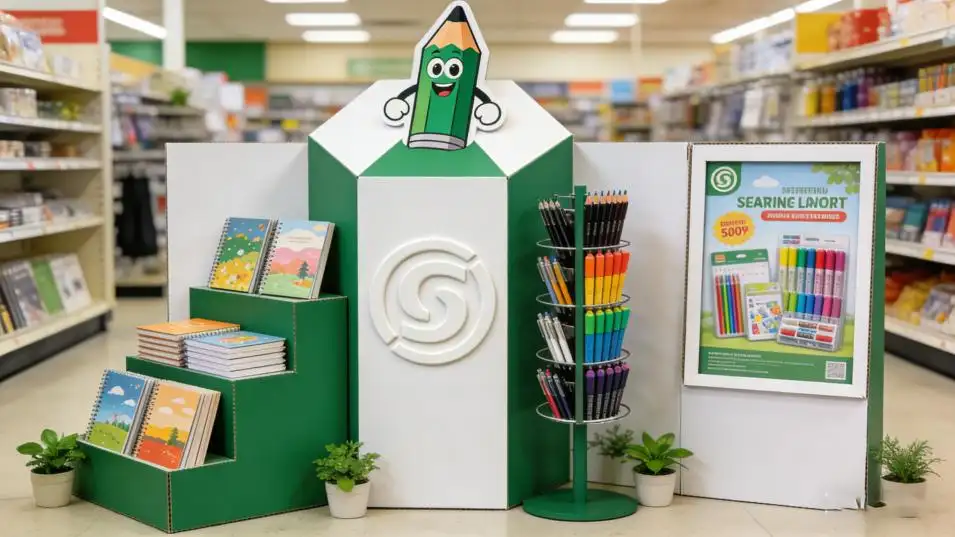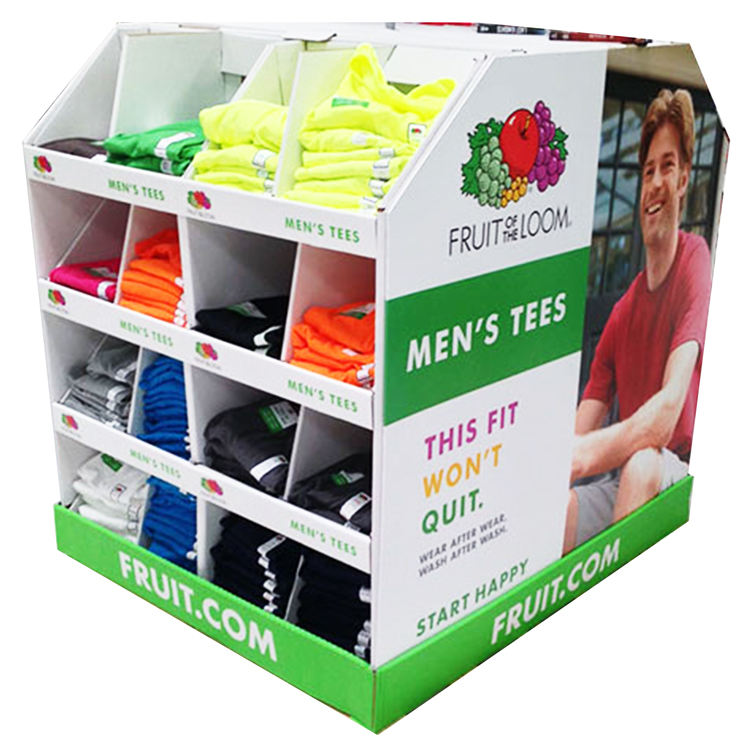Struggling to innovate your displays? Feeling like you're designing in a vacuum? Testimonials show you what customers truly value, sparking your next big idea.
Customer testimonials are a direct line to real-world performance. They reveal what works, what breaks, and what users want. This feedback guides designers to create displays and packaging that are more practical, user-friendly, and effective in the market, driving true innovation.

I've been in this industry for over 16 years, and I can't tell you how many times a simple piece of client feedback has completely changed a project for the better. It's easy to think we have all the answers in the design studio, but the real test happens in a busy retail store. That feedback isn't just a review; it's a roadmap. It guides us from a good design to a great one. Let's break down exactly how this powerful feedback loop works and turns simple comments into breakthrough designs that actually perform.
How Does Feedback on Structural Integrity Drive Smarter Designs?
Worried your displays won't hold up in a busy store? Hearing they collapsed is frustrating. This feedback forces designers to rethink materials and structures for better durability.
Testimonials about displays wobbling, breaking, or being hard to assemble provide critical, real-world stress data. Designers use this to improve structural weak points, choose stronger materials, and simplify assembly. This leads to more robust and reliable designs that last longer in retail environments.
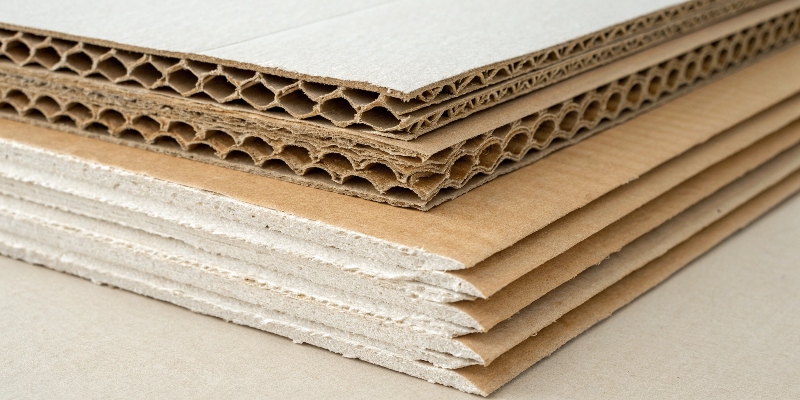
Over my career, I’ve learned that a design is only as good as its performance in the real world. I recall a project we did for a beverage company. They loved the initial prototype of their floor display. It looked fantastic. But a few weeks after the nationwide launch, we started getting calls. A testimonial from a store manager, complete with a photo, showed our display's shelves sagging badly under the weight of the glass bottles. It was a tough lesson, but an invaluable one. The feedback was a direct report from the front lines, highlighting a failure we hadn't caught in our controlled tests.
Analyzing the Failure Point
The customer's photo and description told us everything. The problem wasn't the grade of the corrugated board itself, but the unsupported span of the shelves. The feedback pointed out the exact weak spot. We didn't have to guess; we had clear evidence. It showed us that our standard load-bearing calculations needed to be adjusted for the specific "point load" of heavy, narrow-base bottles.
Implementing a Stronger Solution
The innovation came directly from this failure. Our team went back to the drawing board and added a central vertical support rib under each shelf. We also specified a slightly thicker flute for the shelving board. The next batch of displays was perfect, and that design became a new standard for us when dealing with heavy products. We even created a simple table to guide our future designs based on this kind of feedback.
| Feedback Type | Design Insight | Resulting Innovation |
|---|---|---|
| "Shelves were sagging." | Insufficient support for the product weight. | Add central support ribs; use stronger material. |
| "It was wobbly." | The base was too narrow for the height. | Widen the base or add stabilizing "feet". |
| "The top header bent." | The header locking tabs were too weak. | Redesign tabs for a more secure connection. |
This process, driven by a single customer testimonial, made our entire product line stronger and more reliable.
Can Testimonials on User Experience Transform the Assembly Process?
Ever design a display that looks great on screen but is a nightmare to build? Retail staff hate it. Testimonials reveal these frustrations, pushing you to simplify.
Feedback from store staff about assembly time and difficulty is golden. It pushes designers to create intuitive, tool-free designs. This improves the relationship with retailers and ensures displays are actually set up correctly, maximizing the product's visibility and sales potential.
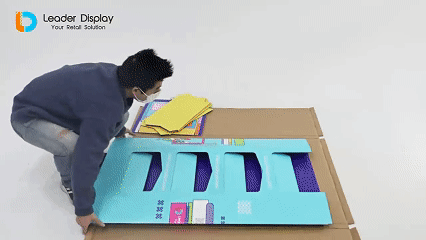
A designer's job isn't finished when the display looks good. It's finished when it's standing perfectly on the retail floor. Early in my career, we designed an intricate, multi-tiered floor display for a high-end cosmetics brand. On the computer, it was a work of art. In reality, it was a puzzle. The feedback from retailers was brutal. One testimonial said, "It took two of us over an hour to build this thing, and we still think it's backward." That hit me hard. We had focused so much on the brand's aesthetic that we completely forgot about the person who had to actually build the display.
From Frustration to User-Friendly Design
That feedback was a wake-up call. The real end-user wasn't the shopper; it was the busy store employee on a Tuesday morning. Our design goal shifted overnight. The new objective for our next project became: "Assembly in under 5 minutes, by one person, with no tools." This constraint forced us to innovate. We had to rethink the entire structure from the ground up, not just for looks, but for simplicity.
Innovating for the Assembler
This led to one of our biggest breakthroughs: the integrated pop-up system. We completely re-engineered the display. The main body shipped flat but popped open into its full form. The shelves were pre-attached and simply folded down, locking into place with audible clicks. We also added a QR code on the shipping box that linked to a 30-second assembly video. The next testimonial we received for a display using this system was, "The easiest, fastest display I have ever built. Thank you." That wasn't just a review; it was proof that our innovation, driven entirely by listening to the user, was a success.
How Does Consumer Interaction Feedback Shape Visual and Functional Appeal?
Is your display just sitting there, ignored by shoppers? It's frustrating when a beautiful design doesn't engage. Consumer feedback reveals why they don't interact with it.
Testimonials describe how shoppers interact with a display. Do they find it easy to take a product? Is the messaging clear? This feedback helps designers fine-tune everything from shelf height to graphic placement, resulting in displays that actively sell products.
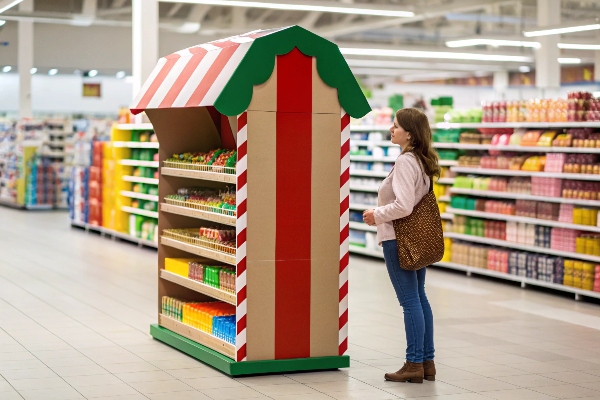
Sometimes, a display can be structurally sound and easy to assemble but still fail to do its primary job: sell a product. The most subtle feedback can lead to the most profitable innovations. A snack food client of ours had this exact problem. They had a beautiful counter display, but the sales lift was minimal. Feedback gathered from store managers indicated that while shoppers noticed the display, they seemed hesitant to actually take the product. It was a well-designed unit, so we were confused. The client was ready to scrap the entire design.
Identifying the Barrier to Purchase
Instead of giving up, we dug deeper. I personally visited a few stores and watched shoppers interact with the display. I even asked a few people what they thought. The problem was tiny but significant. The slots holding the small bags of chips were cut too precisely. To pull a bag out, you had to pinch it and wiggle it, and it felt like you might rip the bag or knock the whole display over. This created a small moment of friction, a subconscious barrier. Shoppers just didn't want the hassle.
Designing for Effortless Interaction
The innovation here was all about removing that friction. We redesigned the interior structure with wider, curved cutouts that presented the bags at a slight angle. It made it incredibly easy for a customer to grab one with just two fingers. The change was almost invisible to the naked eye. However, sales from that same display design jumped by over 25% in the next quarter. It taught me that innovation isn't always about a radical new look. Sometimes, the best innovation is an invisible improvement that makes the customer's journey from "seeing" to "buying" completely effortless.
Conclusion
Ultimately, customer testimonials are not just reviews; they are essential design tools. They guide innovation, ensuring our custom displays and packaging are more durable, user-friendly, and commercially successful.



